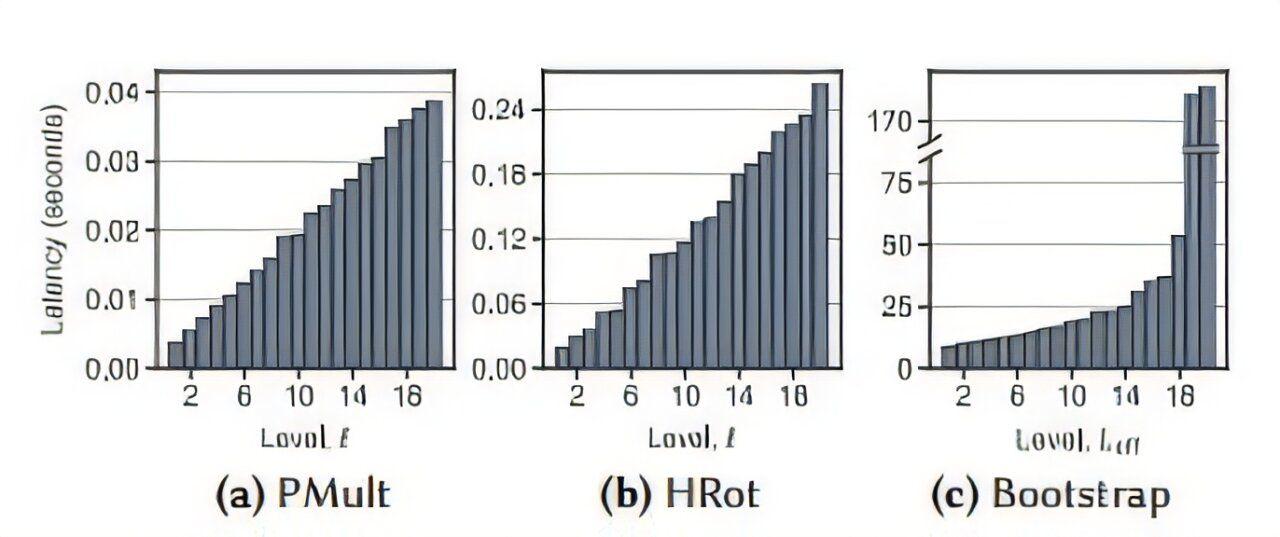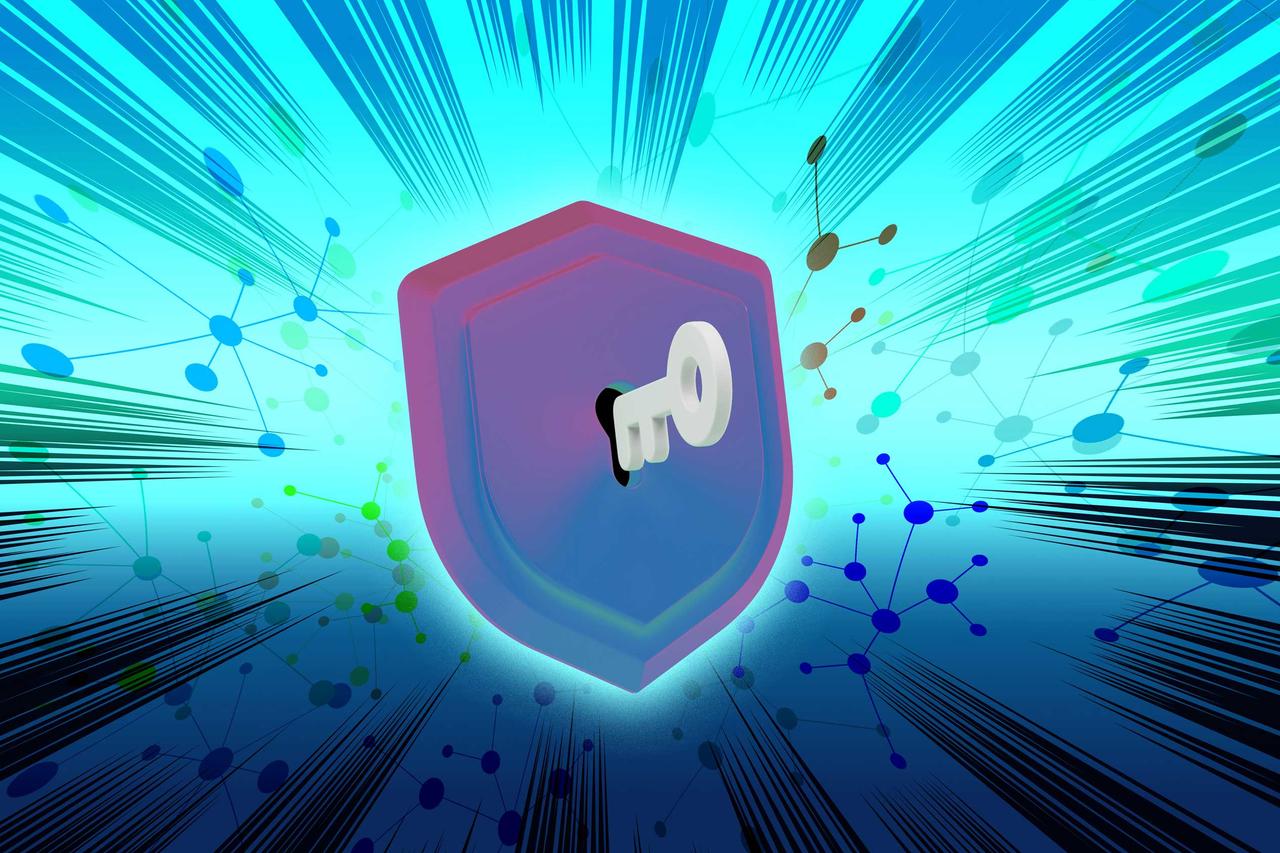New Encryption Method Enhances Privacy for AI-Powered Medical Data Analysis
2 Sources
2 Sources
[1]
Study: New method of privacy enhancement for AI-powered medical data
UB-led experiments show the technique safeguards personal health info, and is more than 99% effective detecting sleep apnea BUFFALO, N.Y. - Artificial intelligence has the potential to improve doctors' ability to diagnose and treat sleep apnea. But the technology is not widely adopted due to fears that it does not safeguard patient data. This could soon change. A new University at Buffalo-led study - funded by a $200,000 IBM/State University of New York grant - shows how to safely encrypt AI-powered data as it travels from third-party cloud service providers, like Google or Amazon, to doctors and their patients. The method, which relies on fully homomorphic encryption (FHE), proved 99.56% effective in detecting sleep apnea from a deidentified electrocardiogram (ECG) dataset that is available for research. Ultimately, the technique could speed up and improve the detection and treatment of sleep apnea, and be used in other health care applications where securing data is paramount. "This work highlights how secure, encrypted data-processing can protect patient privacy while still enabling advanced, AI-based diagnostic tools. It offers significant potential for improving health care security in sleep apnea diagnosis and other areas," said lead research investigator Nalini Ratha, PhD, SUNY Empire Innovation Professor in the Department of Computer Science and Engineering at UB. The study was published at the 2024 International Conference on Pattern Recognition (ICPR), held Dec. 1-5 in Kolkata, India. Co-authors include Charanjit Jutla, a research staff member at IBM; Arjun Ramesh Kaushik, PhD student at UB; and MS students Tilak Sharma and Bharat Yalavarthi, who both recently graduated from UB's computer science program. Maximizing benefits, decreasing risks AI can benefit doctors and patients alike, Ratha said. Machine learning offers several advantages, including faster, more efficient analysis, the ability to process large volumes of data and the potential for more accurate diagnosis. For instance, deep learning algorithms are trained to identify patterns in the ECG signals that indicate disruptions in breathing or decreased oxygen levels during sleep, which are characteristic of sleep apnea. By analyzing large amounts of ECG data, these models can learn to detect subtle abnormalities that may be difficult for human doctors to identify, he explained. It's just the dissemination of the data, as well as the diagnosis results, that is troubling as it may violate patient privacy. "If a cloud service provider like Google or Amazon runs an analytic on my data, they can potentially figure out what my sleep apnea status is and then start sending me ads to buy this or that," he said. "The cloud service providers also may have arrangements with other companies to cross-sell me things. The sleep apnea information is only meant for my doctor; it's not for public consumption, especially for generating advertisement revenue from my situation." Insurance companies could also capture the data and potentially raise premiums on sleep apnea patients because their conditions have been revealed. "Once the first wall of confidentiality is broken, the information losses can cost the patient in many ways," Ratha said. "Once you're collecting all these ECGs without any constraints then you can try to make lots of unnecessary linkages. If anyone submits their ECG to a service provider on the internet, that's where we come in. How do we prevent those service providers from misusing data?" Faster and efficient processing of encrypted data FHE-based analytics are known to be slower and more complex than traditional unencrypted data analytics methods. The researchers overcame these drawbacks by developing new techniques that optimize key deep learning operations, enabling the FHE system to perform faster and cheaper. Examples of these techniques, which encompass all stages of a deep neural network, include convolution, which is a method used to detect patterns; activation functions, like a rectified linear unit, which helps the model make decisions; pooling, which is used to reduce data size; and fully connected layer, which is a neural network in which each input node is connected to each output node. Citing a standard example in FHE domain, Ratha used a gold analogy to explain how their encryption system works. "If you want to build an ornament out of the gold, but you don't want to give it directly to the jeweler because you don't know what the jeweler will mix with it, you put it in a box," he said. "The jeweler can touch the gold, but he cannot ever take it out of the box. The box is our encryption, the data is the gold, and the jeweler is the FHE-based algorithm that comes and touches the data but cannot pull it out of the box." Ratha emphasized that while they used sleep apnea for this study, their findings could apply to many analytics from data for X-ray images, MRIs, CT scans and other medical procedures. "There are a lot of situations where privacy is paramount," he said.
[2]
Study: New method of privacy enhancement for AI-powered medical data
Artificial intelligence has the potential to improve doctors' ability to diagnose and treat sleep apnea. But the technology is not widely adopted due to fears that it does not safeguard patient data. This could soon change. A new University at Buffalo-led study shows how to safely encrypt AI-powered data as it travels from third-party cloud service providers, like Google or Amazon, to doctors and their patients. The method, which relies on fully homomorphic encryption (FHE), proved 99.56% effective in detecting sleep apnea from a deidentified electrocardiogram (ECG) dataset that is available for research. Ultimately, the technique could speed up and improve the detection and treatment of sleep apnea, and be used in other health care applications where securing data is paramount. "This work highlights how secure, encrypted data-processing can protect patient privacy while still enabling advanced, AI-based diagnostic tools. It offers significant potential for improving health care security in sleep apnea diagnosis and other areas," said lead research investigator Nalini Ratha, Ph.D., SUNY Empire Innovation Professor in the Department of Computer Science and Engineering at UB. The study was presented at the International Conference on Pattern Recognition (ICPR 2024), held Dec. 1-5 in Kolkata, India. Co-authors include Charanjit Jutla, a research staff member at IBM; Arjun Ramesh Kaushik, Ph.D. student at UB; and MS students Tilak Sharma and Bharat Yalavarthi, who both recently graduated from UB's computer science program. Maximizing benefits, decreasing risks AI can benefit doctors and patients alike, Ratha said. Machine learning offers several advantages, including faster, more efficient analysis, the ability to process large volumes of data and the potential for a more accurate diagnosis. For instance, deep learning algorithms are trained to identify patterns in the ECG signals that indicate disruptions in breathing or decreased oxygen levels during sleep, which are characteristic of sleep apnea. By analyzing large amounts of ECG data, these models can learn to detect subtle abnormalities that may be difficult for human doctors to identify, he explained. It's just the dissemination of the data, as well as the diagnosis results, that is troubling as it may violate patient privacy. "If a cloud service provider like Google or Amazon runs an analytic on my data, they can potentially figure out what my sleep apnea status is and then start sending me ads to buy this or that," he said. "The cloud service providers also may have arrangements with other companies to cross-sell me things. The sleep apnea information is only meant for my doctor; it's not for public consumption, especially for generating advertisement revenue from my situation." Insurance companies could also capture the data and potentially raise premiums on sleep apnea patients because their conditions have been revealed. "Once the first wall of confidentiality is broken, the information losses can cost the patient in many ways," Ratha said. "Once you're collecting all these ECGs without any constraints then you can try to make lots of unnecessary linkages. If anyone submits their ECG to a service provider on the internet, that's where we come in. How do we prevent those service providers from misusing data?" Faster and efficient processing of encrypted data FHE-based analytics are known to be slower and more complex than traditional unencrypted data analytics methods. The researchers overcame these drawbacks by developing new techniques that optimize key deep learning operations, enabling the FHE system to perform faster and cheaper. Examples of these techniques, which encompass all stages of a deep neural network, include convolution, which is a method used to detect patterns; activation functions, like a rectified linear unit, which helps the model make decisions; pooling, which is used to reduce data size; and fully connected layer, which is a neural network in which each input node is connected to each output node. Citing a standard example in FHE domain, Ratha used a gold analogy to explain how their encryption system works. "If you want to build an ornament out of gold, but you don't want to give it directly to the jeweler because you don't know what the jeweler will mix with it, you put it in a box," he said. "The jeweler can touch the gold, but he cannot ever take it out of the box. The box is our encryption, the data is the gold, and the jeweler is the FHE-based algorithm that comes and touches the data but cannot pull it out of the box." Ratha emphasized that while they used sleep apnea for this study, their findings could apply to many analytics from data for X-ray images, MRIs, CT scans and other medical procedures. "There are a lot of situations where privacy is paramount," he said.
Share
Share
Copy Link
A University at Buffalo-led study introduces a novel encryption technique for AI-powered medical data, proving highly effective in detecting sleep apnea while safeguarding patient privacy.

Innovative Encryption Technique Safeguards AI-Powered Medical Data
Researchers at the University at Buffalo have developed a groundbreaking method to enhance privacy in AI-powered medical data analysis. The study, funded by a $200,000 IBM/State University of New York grant, demonstrates how to securely encrypt data as it moves between third-party cloud service providers and healthcare professionals
1
.Fully Homomorphic Encryption: A Game-Changer for Medical Data Security
The new technique, which utilizes fully homomorphic encryption (FHE), has shown remarkable effectiveness in detecting sleep apnea. In tests using a deidentified electrocardiogram (ECG) dataset, the method achieved a 99.56% accuracy rate in identifying the condition
2
.Lead research investigator Nalini Ratha, Ph.D., SUNY Empire Innovation Professor at UB, emphasized the significance of this development: "This work highlights how secure, encrypted data-processing can protect patient privacy while still enabling advanced, AI-based diagnostic tools"
1
.Addressing Privacy Concerns in AI-Powered Healthcare
The adoption of AI in healthcare has been hindered by concerns over data privacy. The new encryption method aims to alleviate these fears by preventing unauthorized access to sensitive medical information. Ratha explained the potential risks of unencrypted data:
"If a cloud service provider like Google or Amazon runs an analytic on my data, they can potentially figure out what my sleep apnea status is and then start sending me ads to buy this or that"
2
.Optimizing FHE for Efficient Data Processing
FHE-based analytics are typically slower and more complex than traditional unencrypted methods. To overcome these challenges, the research team developed new techniques to optimize key deep learning operations, enabling faster and more cost-effective FHE system performance
1
.These optimizations cover various stages of deep neural networks, including:
- Convolution for pattern detection
- Activation functions for decision-making
- Pooling for data size reduction
- Fully connected layers for comprehensive node connections
Related Stories
The "Gold in a Box" Analogy
To illustrate how their encryption system works, Ratha used a gold analogy:
"If you want to build an ornament out of gold, but you don't want to give it directly to the jeweler because you don't know what the jeweler will mix with it, you put it in a box. The jeweler can touch the gold, but he cannot ever take it out of the box"
2
.In this analogy, the box represents the encryption, the gold symbolizes the data, and the jeweler represents the FHE-based algorithm that can interact with the data without extracting it.
Broader Applications in Healthcare
While the study focused on sleep apnea detection, the researchers believe their findings have wide-ranging applications in healthcare. The encryption method could be applied to various medical procedures and imaging techniques, including X-rays, MRIs, and CT scans
1
.As AI continues to revolutionize healthcare, this innovative approach to data security could pave the way for more widespread adoption of AI-powered diagnostic tools while ensuring patient privacy remains protected.
References
Summarized by
Navi
Related Stories
Orion: A Breakthrough in Privacy-Preserving AI Using Fully Homomorphic Encryption
27 Mar 2025•Technology

Revolutionary AI Model Analyzes Full Night of Sleep with High Accuracy in Largest Study to Date
18 Mar 2025•Science and Research

MIT Researchers Enhance AI Data Privacy with Improved PAC Privacy Framework
11 Apr 2025•Science and Research

Recent Highlights
1
AI Chatbots Sway Voters More Effectively Than Traditional Political Ads, New Studies Reveal
Science and Research

2
OpenAI declares code red as Google's Gemini 3 gains 200 million users in three months
Technology

3
Trump approves Nvidia H200 chip exports to China with 25% revenue cut, defying Senate concerns
Policy and Regulation




